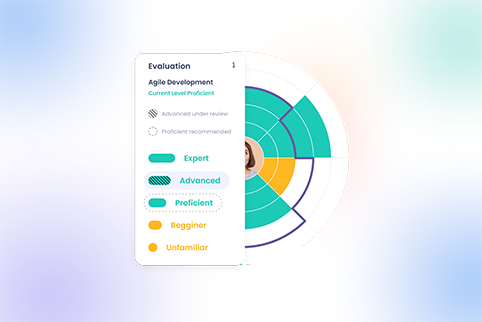Career Development: The Key to Improve Employee Retention
9 min read

In today’s competitive job market, attracting and retaining top talent is a key challenge for organizations. This is why finding ways to improve employee retention remains paramount — especially after recent large trends like The Great Resignation or Quiet Quitting.
And career development has emerged as the most effective solution for this challenge. In fact, opportunities for learning, development, and career growth are now among the top 5 reasons people seek new jobs, according to LinkedIn’s 2023 Workplace Learning Report.
Additionally, a recent study by McKinsey & Company, published on February 2, highlights that a focus on employee development helps companies gain an edge in a looming recession. The research found that these companies share several common traits.
“They create opportunities for employees to keep learning and reinventing themselves, such as by providing more than 70 hours a year of training per employee, and by making promotions and internal transfers readily available. In addition, they promote a culture of ‘intrapreneurship,’ where employees can collaborate and share expertise and ideas across functions.”
But why is career development more important than ever? And how does it help improve employee retention? These are only some of the questions we’ll be addressing in this article.
Why is career development more important than ever?
The importance of career growth has been skyrocketing due to changing expectations of employees and the presence of a multigenerational workforce in today’s organizations. Newer generations, especially Gen Z talent, have different needs and expectations and are more likely to change jobs quickly.
For them, an excellent employee experience is based on continuous learning and growth opportunities along with challenging and meaningful work. Or, in other words, younger workers want to grow, they want to learn, they want flexibility, and they want to feel like they are truly part of the company’s mission.
Here are additional reasons why career development is important:
- Increases employee engagement, satisfaction, and retention
- Fosters a growth mindset, flexibility, and agility
- Reduces costs associated with attrition and new hires
- Makes succession planning easier and more efficient
- Prepares the organization and its teams for the challenges of tomorrow
- Contributes to a positive brand image and reputation
Lack of career development and advancement is the top reason for quitting previous jobs.
— McKinsey Study
How career development improves employee retention
When career growth opportunities are available and easily accessible, employees feel empowered and encouraged to make the most out of their current skills and explore their full potential. It also makes them feel valued, appreciated and cared for beyond their job title.
Having access to learning resources that are transparent and open to everyone also builds trust and collaboration — both fundamental elements in having successful and enjoyable work relationships. And these relationships are one of the major factors in people’s decision to stay or leave a company, according to Adecco Group.
In addition to this, plenty of studies and insights already reveal how career development can significantly improve employee retention, for example:
At the two-year mark, an employee who has made an internal move has a 75% likelihood of staying with their company compared to a 56% chance for someone who has not made such a move.
— LinkedIn Workplace Learning Report
Types of career development opportunities
When it comes to development and learning, organizations can take advantage of a wide range of methods that will help employees broaden their skill set and knowledge, such as:
- Experiential and skills-based training. According to statistics, most learning occurs beyond formal training programs. It is in fact a continuous process where people get to develop their skills through on-the-job experiences (70%), and exposure and interactions in the workplace facilitated by coaching sessions, mentoring, feedback, or collaboration (20%). Only 10% of the learning is a result of formal training, eLearning, or coursework. Additionally, learning and development opportunities that are tailored to each employee’s unique potential and skills rather than being connected to their job roles have a direct impact on employee engagement and productivity, and thus retention.
- Mentoring & reverse mentoring. We all know what mentoring is, but did you know that reverse mentoring — the practice of pairing junior workers with more experienced, senior leaders — can help the latter better understand younger employees and create a culture that’s inclusive and nurturing for everyone? Mentoring contributes significantly to people’s development when internal matching between mentors and mentees is implemented in a strategic and intentional manner.
- Coaching. It is the art of helping managers move beyond the task-completion role to a more human and future-centric approach. In this, they foster stronger and more trustworthy relationships with their team members, who can then grow and benefit from this additional support.
- Job shadowing. This a perfect example of on-the-job learning, which shouldn’t be limited to those interested in vertical moves. Watching somebody else work and understanding the thinking behind decision-making and why things are done in a specific way can benefit lateral-move seekers just as much.
- Cross-functional collaboration. A common practice among agile workforces is to enable people to move across teams (and even departments) quickly and contribute to projects that advance the company’s mission. It relies on a high level of cross-departmental collaboration and trust.
How to promote and facilitate career development for each employee
To improve employee retention, career growth needs to become a part of the company’s values and culture. It’s an approach that thrives with the support of all C-level executives, HR leaders, managers, and departments. And here are some of the steps your organization can take in this direction:
Understand employees’ career aspirations and goals
The first step in supporting your people’s continuous growth and development is to better understand their career goals and aspirations. Each employee has different expectations and the ideal situation is to find a match between your business needs and your people’s desires and aspirations. Not all your employees are eager to advance in leadership roles, one of them might just want lateral moves or simply take a reconversion path ahead.
There are various ways to achieve this, from one-on-one career conversations to pulse surveys. It’s all about choosing the method with the highest engagement levels and useful feedback.
And when they feel heard and supported, people are more likely to be motivated and committed, which will contribute massively to their career growth and development.
Have regular career conversations
These conversations provide a structured and intentional opportunity for managers and employees to discuss career goals, aspirations, and development plans. They also help build trust and rapport, fostering a positive and supportive work culture.
By having regular career conversations, people will also feel like they are part of the company’s long-term future, which will encourage them to seek different projects and roles that interest them.
It’s also a reassuring process. One which reminds workers of what is available in terms of professional journey and which dismisses fears like stagnation or “my skills aren’t put to good use”.
Identify people’s strengths and areas of improvement
To plan for the future, you first need to have a clear picture of the current skills that your employees possess. Use skills assessments to discover current capabilities, as well as proficiency levels, and leverage these insights to decide what skills need to be improved in each position or department and in alignment with the organizational goals.
Enable learning in the flow of work
Learning in the flow of work is an essential concept for organizations seeking to improve employee skills, knowledge, and performance. The idea is to integrate learning into the daily work routine, making it a natural and ongoing process.
But why is this type of learning so effective? Because the new skills acquired by employees in this way are immediately relevant to their work. This, in turn, can improve their job performance, increase their confidence, and help them progress in their careers. This way, employees grow, and the company stays innovative and competitive — it’s a win-win for everyone.
Embrace internal mobility & flexible career paths
Whether it’s in the form of job rotations, promotions, or lateral moves, promoting internal mobility and matching people with the best-fit development opportunities inside their organization is a stepping stone on the road to improving employee retention and making the most out of the skills available in your organization.
Through a talent marketplace, you can democratize access to career development at each level and make all development opportunities visible to your workforce through a self-service model. This way, people can join temporary projects, pursue new job roles or assignments, and take on non-linear career paths according to their skills, interests, and available options in the organization.
79% of L&D leaders agree it is less expensive to reskill a current employee than to hire a new one.
— LinkedIn Workplace Learning Report
Facilitate succession planning
Effective succession planning is a top-down process that starts with leaders and managers, who start identifying individuals who have the potential to fill key positions within an organization. The next steps are:
- assessing their strengths and weaknesses
- offering them targeted training and development opportunities
- regular evaluation of progress and delegation of higher responsibilities
Not only does succession planning provide employees with a clear career path, but it also boosts their engagement and motivation levels — which are essential for talent retention.
How Nestor can help improve employee retention & career development
Nestor’s People Intelligence Platform was designed to empower organizations to engage, develop, and retain top talent and ensure the right people, are in the right place, at the right time by leveraging a skills-based approach.
Nestor achieves all this by helping you and your workforce unlock the power of skills and become more agile and better prepared for the challenges of tomorrow.
Our platform helps organizations make an impact on people’s development and empowers employees to pursue career paths that suit their needs and aspirations, which will lead to personal and business success.







